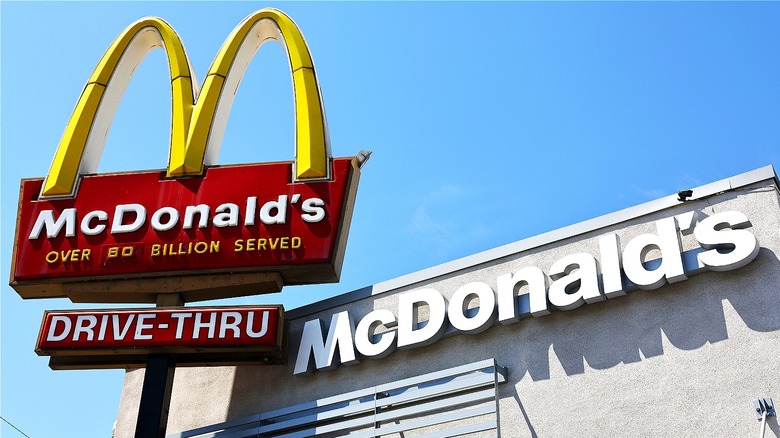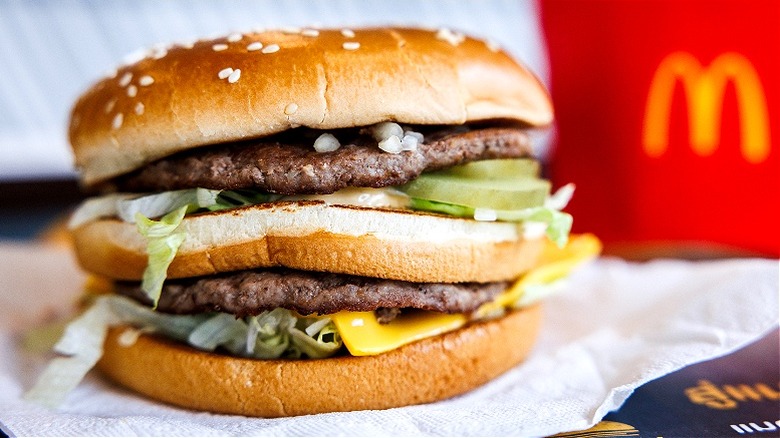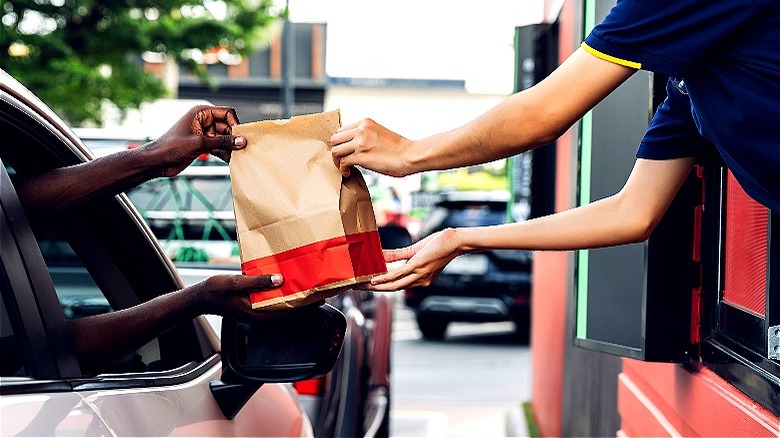The Truth Is Out: McDonald's Admits What Customers Suspected All Along
It's not often a corporation openly admits that its consumers think they're being over-charged, but that's exactly what McDonald's did in a late July 2024 earnings call. While Joe Erlinger, McDonald's USA president, attempted to justify the company's price increases in an open letter back in May, it seems executives have seen the writing on the wall with that approach. The company missed both its 2024 second-quarter earnings, as well as its revenue estimates. It also posted a drop in net income when compared to the same time in 2023, and a 0.7% sales decrease among its U.S. stores for the quarter (sales in some of McDonald's international markets were even worse). This is a noticeable contrast with the same period last year in 2023, in which McDonald's posted a 10.3% increase in sales growth (which, at the time, was attributed to the popularity of the Grimace Birthday special).
As fewer people order fast food (a May 2024 LendingTree survey found that 62% of American consumers reported eating less fast food due to rising prices), fast-food companies are scrambling to come up with new ways to appeal to their customers. LendingTree also found that 78% of consumers reported now seeing fast food as a luxury due to its increased pricing; this could lead to long-term perception issues, especially for fast-food's lower-income market. While you might be surprised to learn how much Americans spend on fast food every year (it's in the billions, by the way), changing consumer behaviors thanks to increases to menu prices could spell trouble for one of the world's most recognizable brands.
McDonald's value strategy
McDonald's has moved to create more perceived value through the promotion of special discounts and deals. Perhaps most notably, the company introduced a $5 meal deal in late June. While the deal was originally slated to have a four-week run time, the company has already announced that it will extend the meal deal through August in most of its U.S.-based restaurant locations. This extension is largely due to the 3% increase in guest count McDonald's experienced as a result of the promotion.
While these deals don't necessarily translate to higher sales or inherent profitability for McDonald's, they do work to improve brand perception, as well as increase customer growth (which could lead to better financials in the future). Plus, a large element of any low-priced special discounted meal deal is the potential for upselling or adding on another, more expensive, product to every order.
Robert Byrne, a director for a restaurant market research firm, explained to CNBC how such deals work: "It's also about converting the consumer who's coming for the deal to a higher-ticket consumer by introducing other add-ons or other things that they might do. The risk is that they don't." Since these special deals are generally offered at a loss to the company (find out how much McDonald's makes from its $5 meal deal here), the potential for unsustainability is high (think of how consumers abused Red Lobster's ill-fated all-you-can-eat-shrimp deal). This means however successful the $5 meal-deal campaign is, it's guaranteed only to be a short-term fix.
What's next for fast food
As McDonald's (and competitors like Wendy's and Burger King) offer value meals to draw their customers back, the question remains of how they can keep customers coming back. Speaking with CNBC, Shubhranshu Singh, associate professor at the Johns Hopkins Carey Business School, said of $5 meals, "That $5 meal is not an item that can be a permanent part of the menu; the cost has gone up so much that if franchisees are going to sell $5 value meals, they will lose money on every customer that buys them." This math leaves many in the fast-food industry still seeking a more permanent solution to the inflationary costs of ingredients and the need for increased menu prices.
It is worth mentioning there are notable fast-food outliers that have maintained profitability in the face of sagging sales amongst the competition. Wingstop, for example, reported a 21.6% gain in U.S. same-store sales in the first quarter of 2024, while Chipotle saw 5.4% higher transactions. Looking at Q2, Burger King saw same-store sales growth of 3.4%, while Popeyes saw an increase of 5.7%, according to Forbes.
This data suggests consumers are still willing to pay for their favorite options, if in a more limited and brand-specific way. However, as consumers shift fast food into "little treat" culture, as opposed to a regular part of a family's meal rotation, some of the largest fast-food brands in the country could face a financial crisis. Without a more solid long-term plan to prioritize affordability for its menu prices, McDonald's, along with its various competitors, could be in for more financial hardship.


